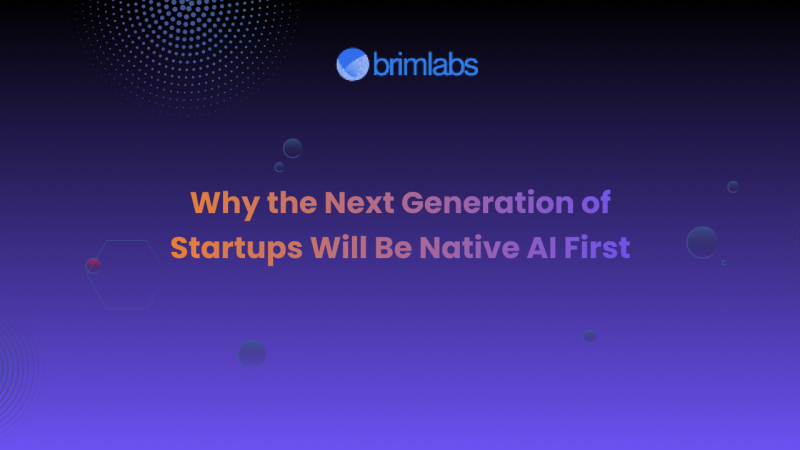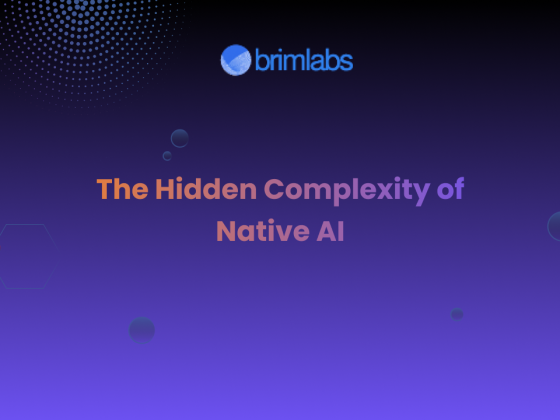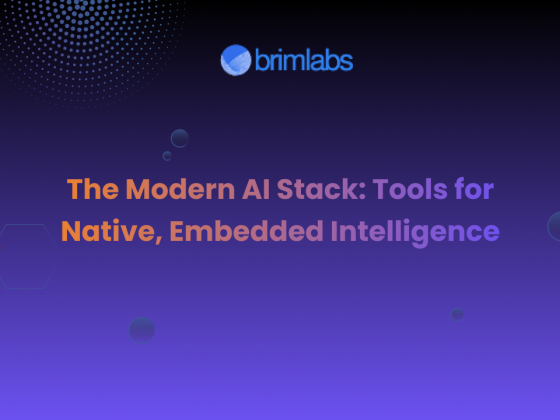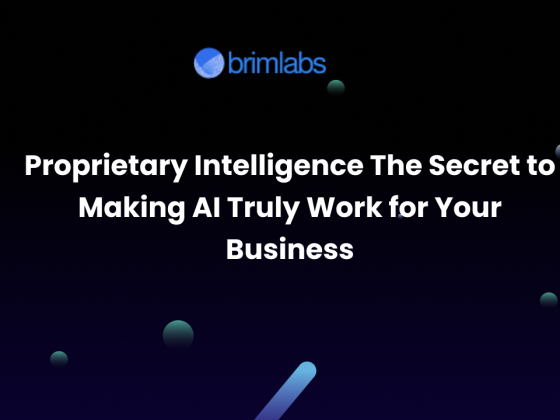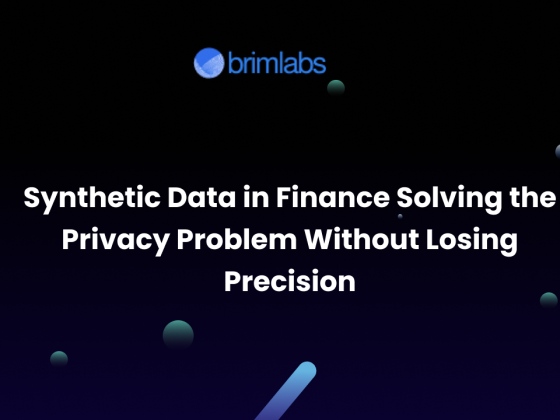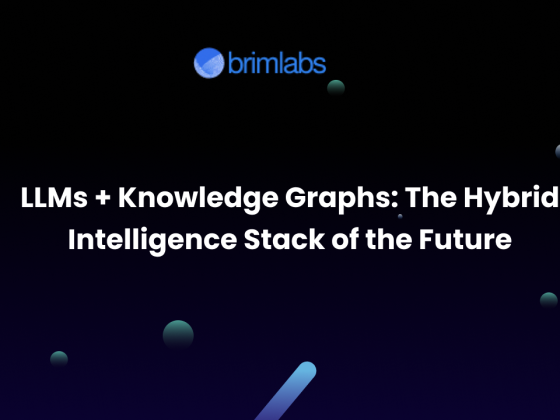The AI hype is real, but for most startups, integrating ChatGPT into a feature isn’t the same as building an AI-native product.
We’re at the edge of a generational shift: from SaaS 2.0 to Native AI-first startups, companies architected from scratch with intelligence, automation, and learning at the core. These startups won’t just use AI; they’ll be impossible without it.
The next generation of winners will not simply offer “smarter” workflows. They’ll invent new categories, redefine value chains, and compound faster because of their native AI DNA.
What is Native AI?
Native AI means AI is not a plugin, it’s the product. These startups are:
- Built around continuous learning loops
- Architected to collect, label, and adapt on real-time user data
- Shaped by agents, retrievers, and autonomous decision systems
- Exposed via conversational UIs, APIs, or adaptive interfaces
Native AI isn’t about integrating ChatGPT. It’s about building infrastructure, experience, and value around learning systems.
Why This Is a Paradigm Shift
1. AI Is No Longer a Feature, It’s Infrastructure
The shift is not about adding intelligence; it’s about building on top of it. With foundational models, open-weight LLMs, and composable agents becoming developer primitives, startups can now architect around cognition just like they previously architected around storage or compute.
2. The Interface Layer Is Changing
We’re moving from point-and-click UX to prompt-and-act interfaces. Native AI startups are designing from scratch for:
- Conversational UX
- Voice-driven flows
- Embedded agent-based interactions. The design pattern is no longer screens and buttons; it’s context and delegation.
3. Startups Are Becoming Orchestrators, Not Operators
Native AI founders are not building monoliths. They’re wiring together:
- APIs + agents
- External LLMs + internal data. Their job becomes one of orchestration, optimization, and agent management, reducing the need for large ops or engineering teams early on.
4. Distribution is Embedded into Product Design
Native AI products often go viral faster because:
- They offer immediate value (zero learning curve)
- They learn from every interaction, increasing personalization
- They create a “wow” factor that spreads through word of mouth
Speed of distribution is embedded, not bolted on, through intelligent onboarding and behavior-driven engagement.
5. Moats Come from Real-Time Data Loops, Not Static Features
Traditional startups rely on feature velocity and GTM spend. Native AI startups build moats from:
- Proprietary labeled data generated in-app
- User interactions that retrain and personalize the model
- Behavioral telemetry that drives fine-tuning. The more the product is used, the harder it becomes to replicate.
6. Economic Models Are Being Rewritten
AI-native startups can:
- Operate with leaner teams
- Replace full-time roles with autonomous agents
- Run 24/7 on the edge or cloud. This shifts the unit economics, pricing models, and even headcount structures, creating a new type of high-margin, low-latency startup.
What Makes a Startup Truly Native AI?
- It learns and adapts.
- It acts autonomously.
- It becomes more useful with every interaction.
Let’s break it down with real examples.
Examples of Native AI Startups
1. Lindy.ai: Personal Chief of Staff
Lindy doesn’t just schedule meetings; it understands your communication patterns, delegates tasks, books calls, and even drafts emails. It’s not just a chatbot, it’s an agentic assistant designed to replace an ops role.
2. Devin (by Cognition): Autonomous Software Engineer
More than a code generator, Devin handles bug fixes, pull requests, and repo management. It’s a new kind of team member, one you manage, not instruct line-by-line.
3. Tavus: AI-Generated Personalized Video Platform
Used by sales and marketing teams, Tavus lets you create thousands of personalized videos from a single recording. Built around generative pipelines, it couldn’t exist without AI.
4. Glean: Enterprise Search and Knowledge Graph
Not a wrapper for Google Drive. Glean builds semantic understanding of enterprise data across tools. Its core engine is retrieval-augmented generation, memory graphs, and real-time relevance tuning.
5. HeyGen: AI-native video avatar creation
Used in HR and training, HeyGen generates human-quality avatars delivering dynamic messages at scale. There’s no product here without deep learning in the core loop.
Why This Model Wins
1. Compounding Intelligence
AI-native startups grow smarter with every interaction. Feedback becomes training data. Interactions become signals. This compounds product value, retention, and defensibility.
2. Data Moats From Day Zero
Because learning is embedded in UX, these startups generate proprietary labeled data from the start, a long-term moat against API-only competitors.
3. Workflow Replacement, Not Workflow Enhancement
AI-native startups don’t slot into existing flows. They replace them. Think “agent replaces analyst,” not “tool assists analyst.” This enables new pricing models, gross margins, and scale dynamics.
4. Speed-to-Market Advantage
With reusable agents, pre-trained models, and end-to-end automation, founders can go from zero to alpha in weeks, testing business hypotheses faster than ever before.
What Founders Are Doing Differently Now
- Building LLM-native UX from day one (chat-first, context-rich, multi-modal)
- Orchestrating agents with task routing, retrievers, feedback loops
- Architecting backends to support RAG, streaming outputs, and embedding stores
- Using user data to build continuous feedback loops instead of static features
This isn’t just tech transformation, it’s founder mindset transformation.
Challenges of Building Native AI (and How to Overcome Them)
- Hallucination Risks
Solved via hybrid RAG + retrieval + structured prompting - Latency at Scale
Optimized using hosted inference (Groq, Anyscale) + caching - Cost of Customization
Reduced with fine-tuning frameworks like LoRA, QLoRA - Data Privacy & Compliance
Solved by local inference, data masking, and AI governance
Building it right is hard, but that’s where strategic product and AI partners matter.
What This Means for Investors, Accelerators, and Product Leaders
- Investors will prioritize defensible data loops, not thin wrappers
- Accelerators will favor teams with native agentic thinking
- Product leaders must unlearn old patterns and build around cognition, not CRUD
Where Brim Labs Fits In: Co-Building Native AI Startups from Day Zero
At Brim Labs, we specialize in co-building AI-native products with visionary founders. Not just integrating models, but re-architecting product DNA around learning systems, retrieval pipelines, and agent frameworks.
Our stack:
- RAG, LangChain, LlamaIndex
- Open source + proprietary LLMs
- Agent orchestration systems
- Serverless AI architecture
- Cost-sharing Model to align long-term product success
We move fast, think long-term, and engineer with founder-first velocity.
Final Thoughts: This Isn’t a Trend, It’s a Platform Shift
The last era was defined by cloud, mobile, and APIs. This one will be defined by native intelligence, adaptive, contextual, proactive systems built from the ground up.
Startups that bolt on AI will struggle to keep up. Startups that build natively will invent the future.
If you’re building something meaningful and want to architect your product around AI from day zero, not just add AI later, let’s build it right.
Book a call with Brim Labs here.

